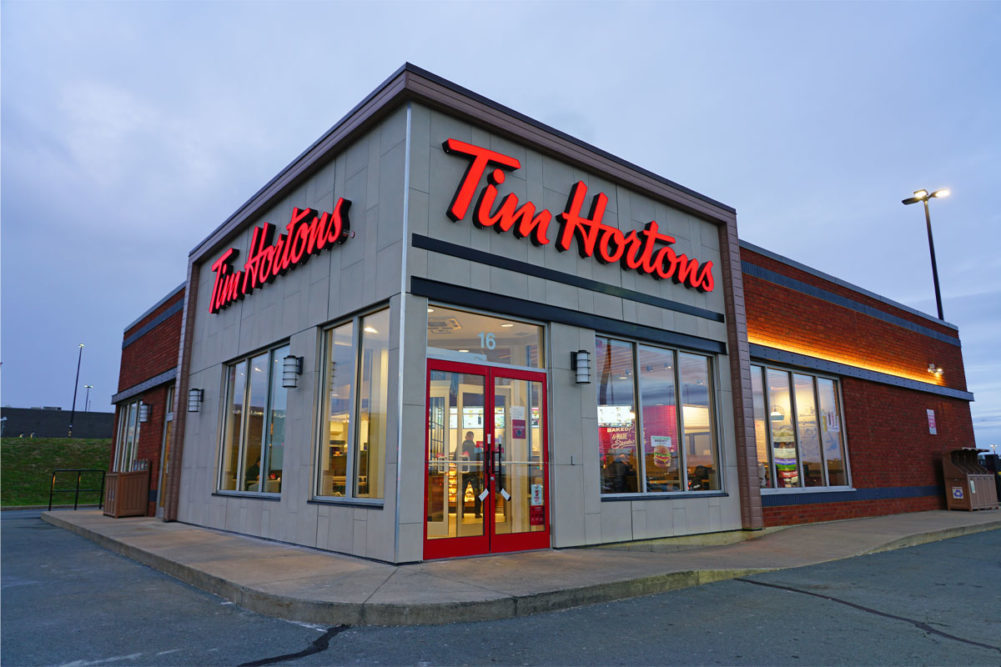TORONTO — A “pretty remarkable combination of growth drivers,” ranging from a Burger King modernization to more afternoon and evening product offerings at Tim Hortons, has Restaurant Brands International Inc. positioned for strong growth over the next five years, company executives said.
In a Feb. 15 presentation to analysts, Josh Kobza, chief executive officer, said the company expects to achieve a minimum of 40,000 restaurants, $60 billion in system-wide sales and $3.2 billion in adjusted operating income by 2028. To reach its goals, he said the company expects to deliver average annual results over the next five years of more than 3% comparable sales growth, more than 5% net restaurant growth and more than 8% systemwide sales growth, translating to at least 8% adjusted operating income growth.
“We’re proud of the work our franchisees and their teams are doing to deliver quality food, excellent service and convenience to guests,” Kobza said. “Our four iconic brands have strong restaurant fundamentals and clear runways for growth. Our long-term investment horizon should result in compelling business performance and drive at least low double-digit annual total shareholder returns over the next five years.”
With a market share in Canada of more than 70% in hot brewed coffee, 65% in baked foods and 60% in breakfast sandwiches and wraps, RBI’s Tim Hortons brand has a strong foundation. Over the next five years RBI said Tim Hortons will focus on growing its p.m. daypart, which currently has a 9% market share. The company plans to grow through wraps, bowls, savory pastries, snacking and new product innovation.
In addition, RBI said it intends to ramp up Tim Hortons’ presence in cold beverages, primarily through cold brew, fruit quenchers, specialty beverages and innovation around its iced cappuccino.
But it’s not just Tim Hortons’ Canadian outlets that are expected to propel the brand. RBI said its US business is expected to be the largest contributor to net restaurant growth in its home markets, with a goal of reaching 1,000 restaurants by 2028.
Another growth driver for RBI will be efforts to co-invest with franchisees to accelerate Burger King’s modern image makeover in the United States and shift the franchise system toward smaller operators who live close to their restaurants. The company said it plans to get 85% to 90% of its Burger King system to the modern image by 2028.
At Popeyes, RBI has plans to continue daypart and occasion expansion of its menu. The brand also intends to accelerate its emphasis on improving restaurant operations through its “easy to run” kitchens. RBI said it expects to have more than 4,200 Popeyes restaurants in the United States and Canada by 2028, up from nearly 3,400 in 2023.
Internationally, RBI’s growth plans over the next five years will be driven by a strong network of well-capitalized master franchise partners, RBI said, adding it sees a path toward opening at least 7,000 new restaurants in international markets by 2028.
“When you add up the sum of the parts of our company, we have a pretty remarkable combination of growth drivers,” said Patrick Doyle, executive chairman of RBI. “The outlook we are sharing for growth is really the lowest average performance that we expect over the next five-years, with real upside potential from there.”
The five-year growth outlook was issued a few days after RBI released its fiscal 2023 financial results. Net income at RBI in the year ended Dec. 31, 2023, totaled $1.72 billion, equal to $3.76 per share on the common stock, up 16% from $1.48 billion, or $3.25 per share, in fiscal 2022. Net revenues in fiscal 2023 were $7.02 billion, up 7.9% from $6.51 billion.



